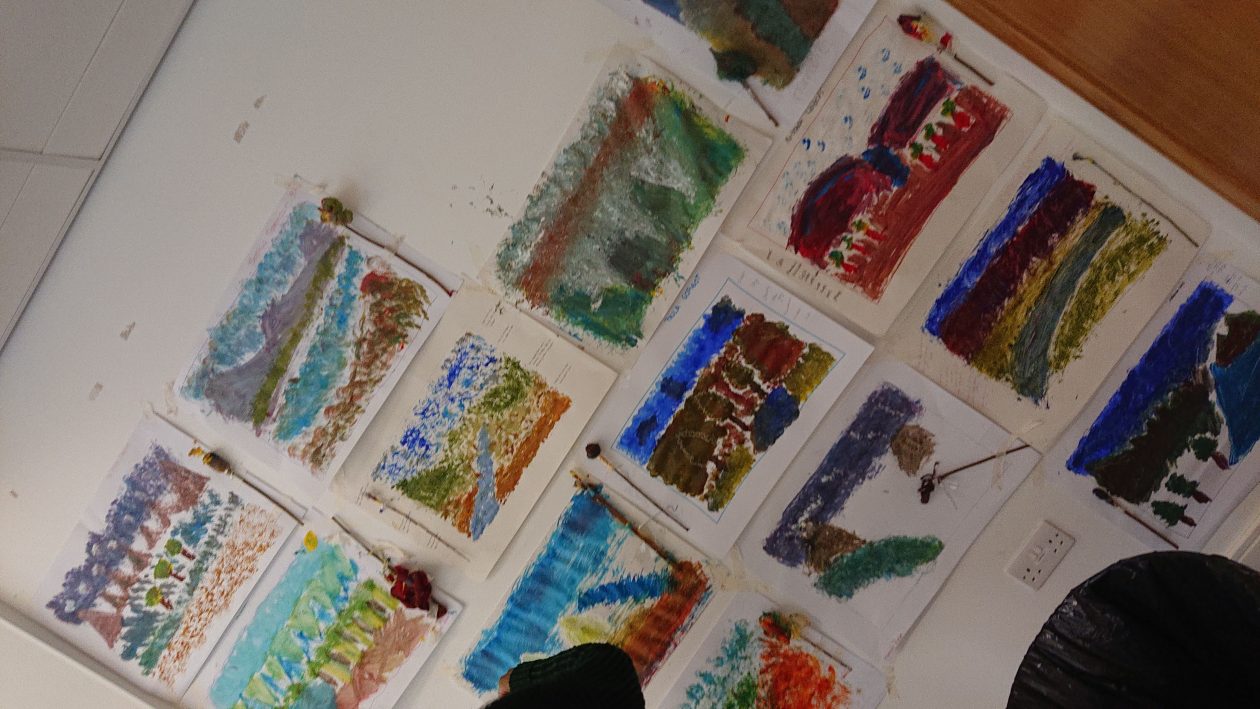Todays lecture introduced me to the Room 13 model. Room 13 is a network of student run art studios within many primary schools and some secondary schools worldwide. Room 13, encourages children to take the lead in learning, manage their own learning and have ‘creative autonomy’ in what they create and the way they do so (McAuliffe, D (2013). Room 13 has proven to result in continuous collaborative working between adults and young people and a youth who are motivated and driven to think and learn.
The arts seminar today explored further the importance of such child lead learning. We were told that we would be painting a picture and automatically I thought I can’t paint!!!. However, this was painting with an twist, we were not given any old paint brush, we were given the task to design our own. This is the paint brush i created and the paintbrushes created by my peers:



I feel like creating our own paint brush put a fun and creative twist on the mediocre, every day painting. We were then given a verbal briefing on the picture we were to create : Create a picture of the Scottish Highlands, the sky was to be cloudy, dark and grey, there was to be mountains (higher on the left), a loch was in the centre of the picture moving towards the bottom left hand side, land was on the foreground which was rustic yellow and green, there was to be a body of water and finally some trees. At first I was confused and thought how am I meant to paint a picture of something I have not seen. However, it very quickly became abundantly clear that this was a very positive thing to do as it immediately took the strain away from wanting your picture to look exactly as the artists. Instead, each and every one of us created our very own diverse take on the briefing.



This has highlighted to me the importance of allowing children to have creative autonomy over their artistic creations, the different end products of each of my peers creations showed the many different images that we all have of the Scottish highlands and in my opinion was a far better representation of them than it would have been if everyone’s was the same. I will ensure to implement lessons like this within my classroom and I look forward to seeing the diverse end products presented to me.
The next part of the day was spent exploring controversial issues through drama. This is a great way to explain the real world issues of today and the past to the children in your classroom. We split into groups and explored issues such as WW2, social justice and immigration through monologues and voices in the head. This was extremely beneficial as we were able to perform and share our views and opinions on these topics and to hear those of our peers. As Booth (2005) states In drama
‘everyone is a student, and everyone teaches’.
This was abundantly true throughout the lesson. I feel this would be great within the classroom as it would allow children to share their knowledge and also for them too take the lead.
Here are some of the experiences and outcomes covered through monologues and voices in the head:
- I enjoy creating, choosing and accepting roles, using movement, expression and voice. EXA 1-12a
- Inspired by a range of stimuli, I can express and communicate my ideas, thoughts and feelings through drama. EXA 0-13a / EXA 1-13a / EXA 2-13a
- I use drama to explore real and imaginary situations, helping me to understand my world. EXA 0-14a
(Scottish Government, 2008)
Overall, again Integrated arts has opened my eyes to the world of creation and showed me just how amazing the end product can be when you allow people to be creative.
References
- Booth (2005)Story Drama: Creating Stories Through Role Playing, Improvising, and Reading Aloud. (2nd Edition)
- McAuliffe, D (2013) Art and Design Education. In T. Bryce and W. Humes (et al eds.) Scottish Education (4th Edition): Referendum, Edinburgh: Edinburgh University Press
- Scottish Government (2008). Expressive Arts Experiences and Outcomes. [Online] Available : https://education.gov.scot/Documents/expressive-arts-eo.pdf [Accessed 25/09/19]
